Can HDB’s environmental impact studies help us better understand recent wildlife home invasions?


Recently, a video went viral when it showed a troop of about nine macaque monkeys scaling the external HDB estate wall of 118 Clementi Street 13 — with a few apparently entering a fifth-floor apartment and uh, stealing some bananas… food? Either that or they’re just being playful and curious.
While most viewers found the video amusing and got off with a chuckle, these incidents shouldn’t be taken lightly. Just last week, a gang of monkeys kidnapped a four-month-old baby in Bareilly, India and threw the baby off a three-storey roof, killing the child.
With the Clementi video, some viewers advised caution, referring to the advisory from the National Parks Board on ways to “monkey-proof” one’s home, such as installing window mesh and grilles and closing all windows and doors when not at home.
Others, however, question if our harmonious living with nature is suspect since our wildlife has to brazenly emerge out of their natural habitat in search of food (or exercise?).
Notably, this isn’t the first time monkeys have casually scaled a housing block. In late 2019, two monkeys scaled 4 storeys of Springdale condominium at Hindhede Walk, Bukit Timah. The condo is next to Bukit Timah Nature Reserve and near Hindhede Nature Park, so seeing monkey business outside your balcony should be kind of expected.
Trying to build a harmonious relationship between Long Tailed Macaques and humans becomes impossible with these boys. pic.twitter.com/sxwOSFyEj7
— ∵ (@vgnrj) October 4, 2019
It should be noted that Blk 118 Clementi Street 13 is next to Maju Forest with Clementi Forest across Clementi Road.
Besides monkeys, we also have, of course, our otters. There are “family groups” now, with the Bishan Otter Family (known as the Bishan 10) being the most popular (or widely spotted and territorial).
The smooth-coated and small-clawed otters are classified as critically endangered species in Singapore, and sightings of them only emerged in 1998 (after the 1970s).
According to The Economist, the emergence of the Bishan otter family is a “sign of Singapore’s success in its greening policy.” They were even featured in David Attenborough’s Wild City documentary.
And yes, National Parks Board also has an advisory on what homeowners can do to protect their compound from these occasional, hungry critters.
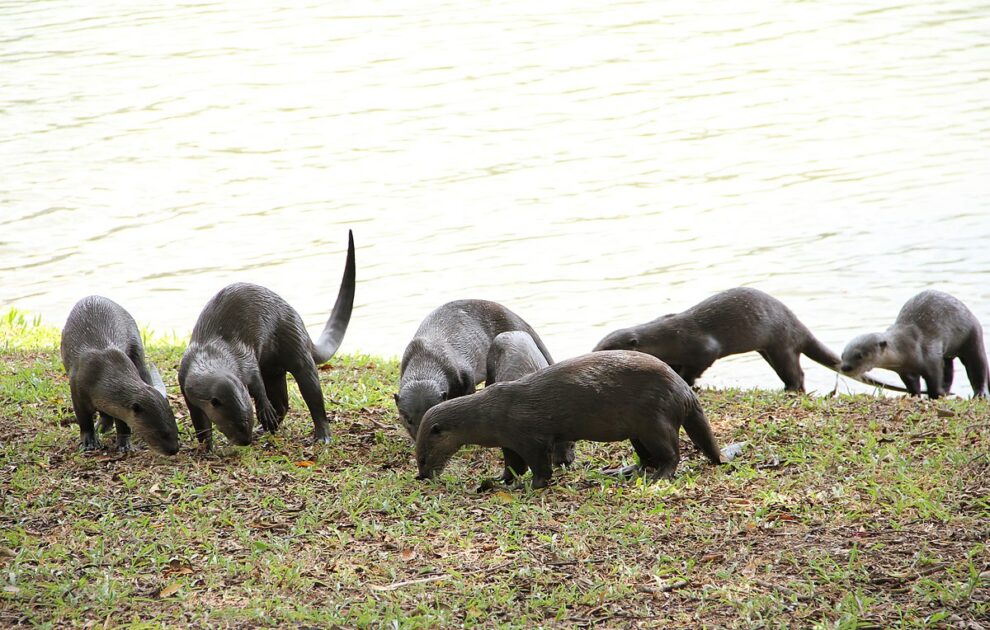
While it’s easy to treat these otters as cute and adorable creatures, they can also be hostile if feel threatened, like in the case of this unfortunate jogger.
What’s even more unfortunate, though, is that otter families have been continuously raiding fish ponds in landed homes and condominiums.
In the past few months, otters have been spotted (and returning) to fish ponds in several condominiums along Pasir Ris Grove, where they’ve vociferously decimated several of the koi fishes there.
Several would take the flesh and bones from their meals to the nearby swimming pools, which then means the condo MCSTs would have to shut down the pools for some “deep cleaning” — which would add to residents’ costs and inconvenience.
In March 2022, otters slaughtered a total of 50 giant goldfishes and eight koi in a private landed property in Seletar Hills. The family had been raising the Tamasabas goldfishes and koi for over 13 years.
Even their 12-year-old Belgian Malinois ‘K9-trained’ dog was overwhelmed by the otters, enough to not make a sound and alert its homeowners.
In May 2021, otters killed and ate over a hundred fish at the Church of Saint Teresa along Kampong Bahru Road. Most of the fish remains — some with their heads or tails bitten off — were scattered around the church’s compound.
Once again, these fishes have been raised by the church for close to 15 years. The otters consumed most of them in four days.
In April 2021, a dozen otters (the Zouk family) were at Alexandra Road’s The Crest condominium, where they ate almost all of the fish. These otters normally prowl the canals which lead to the Singapore and Kallang Rivers.
The migratory movements (or sightings) of these otter families seem to indicate a trail, usually driven by where it’s easy to hunt for available food sources.
For example, earlier between 2015 and 2016, most of the otters were sighted around Sentosa Island, potentially seen as their hunting ground.
Then, otters destroyed about $64,000 worth of koi belonging to a homeowner on Singapore’s Sentosa Island. During that same period, the koi ponds at Sentosa’s Sofitel Singapore Sentosa Resort & Spa and Amara Sanctuary Resort Sentosa were almost entirely wiped out.
Besides monkeys and otters, there are also more wild boar sightings (which we’ve covered in a wildlife survival guide). And we don’t necessarily need to remind you of how dangerous they are.
Last year, there were 102 calls made to Acres about wild boar sightings and complaints (87 the year before and as of March 2022, 34 calls).
Anyway, we’ll just leave this here — in Feb 2022, a wild boar was filmed roaming a public exercise area at 482 Segar Road.
If you’re curious, HDB has a list of environmental studies it conducts for different neighbourhoods it plans to redevelop into housing estates.
At press time, the latest report is that of the Keppel Club Site, which has been brownfield-zoned for residential development, including 6000 HDB BTO flats and 3000 private units.
Other studies include Choa Chua Kang N1 site and Mount Pleasant — the latter having both an impact study and a heritage study.
The studies, which are carried out by technical agencies and independent consultancies, guide the development plans for the areas and generally provide advice on minimising the impact of development works on the environment.
We’ve seen its effect on the new housing estate in Choa Chu Kang, which will change to accommodate at least 2 hectares of existing greenery, including the retention of healthy, mature tree clusters.
This was because green spaces weren’t planned in the URA 2019 master plan for the 21.7-hectare site.
From Google Maps, we can clearly see the cluster of trees between Pang Sua Canal to the west and the Rail Corridor/Woodlands Road to the east.
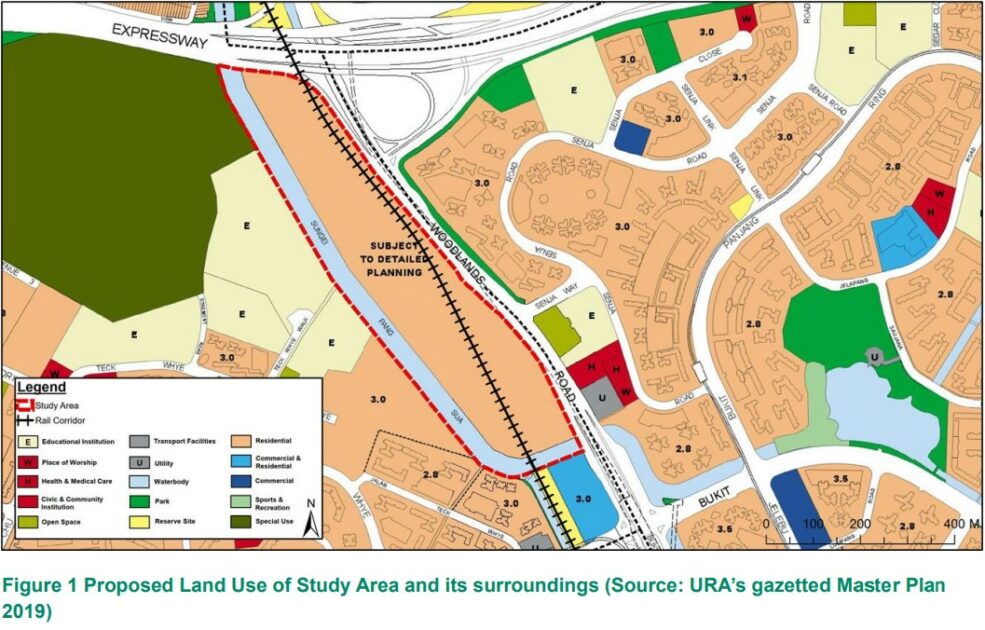
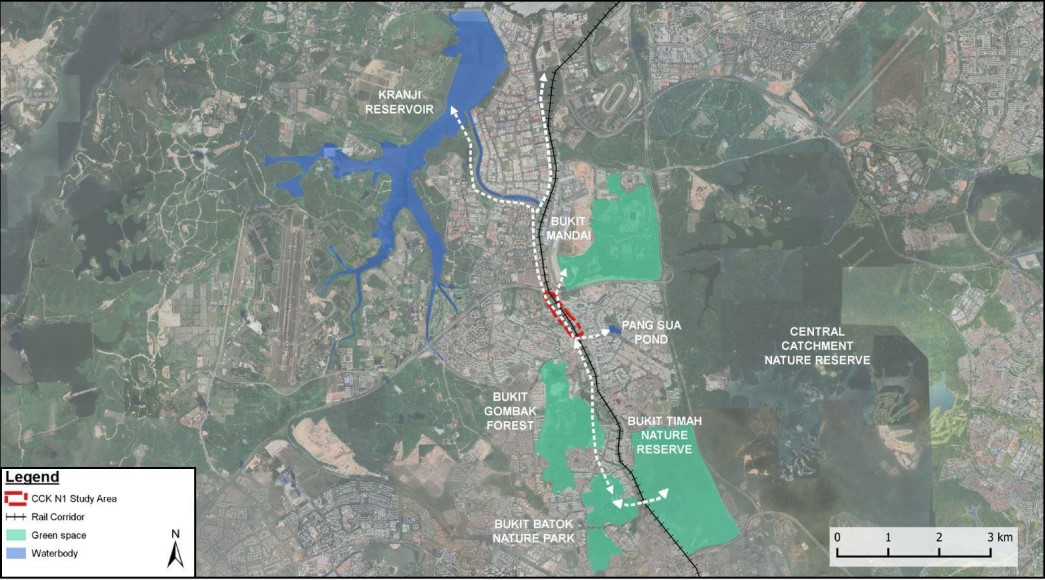
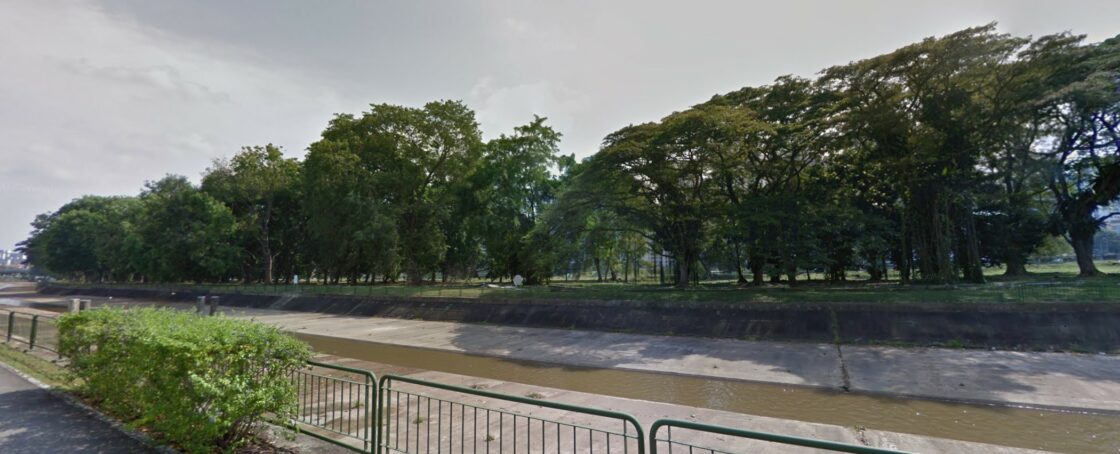
Last year, the Nature Society (Singapore) and Cicada Tree Eco-Place published a book on the woodland, proposing for it to be retained as a public park instead. They also proposed that the stretch of Pang Sua Canal next to the woodland be naturalised so that it could serve as a habitat for animals.
Unfortunately, while feedback was received, HDB could not naturalise the canal due to a lack of additional land. Also, to do so would mean the trees may need to be cleared. However, HDB may study ways to green up the canal walls without affecting the canal’s drainage abilities.
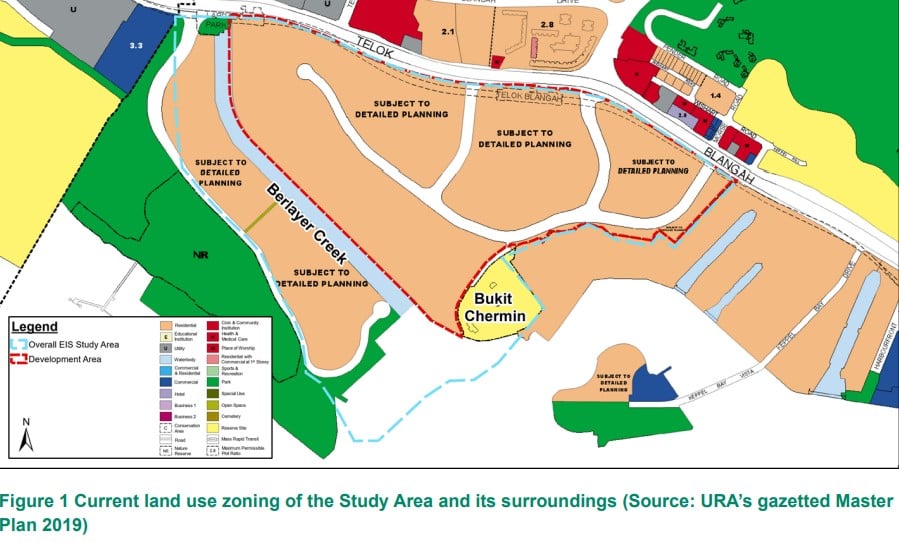
The constant balancing act of preserving flora and fauna while redeveloping gazetted land for public and private housing will be exactly that — constant.
Generally, there is no way to know for sure how our wildlife will react and respond as more land is redeveloped for housing to meet future generational needs. The HDB environmental impact studies are essentially detailed, statistical reports on what is currently pre-existing and how redevelopment would impact the existing environment. These studies do offer suggestions to mitigate different aspects of it based on severity levels.
They are then opened for the public and concerned societies to give feedback.

As many of our HDB and private housing are now built around waterways, rivers and parks, perhaps we should study how these conduits for wildlife like boars, monkeys and otters can be better harmonised with the government’s housing planning parameters — especially if these animals are constantly moving due to shelter and food source.
Companion studies on these migratory mammals or sightings can serve as a conduit for us to better understand some of these reasons and be much more prepared — especially when a troop of monkeys, otters or wild boars come a-knocking at our front door (or window).
ALSO READ: Macaques climbing up into 5th floor Clementi flat and raiding kitchen spook netizens